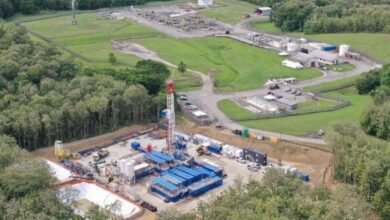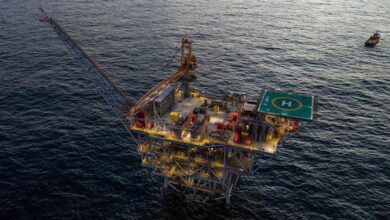New NELP licensing round to push India’s deepwater ambiitions, need for deepwater rigs
After three extensions, the bid deadline for the seventh round of India’s New Exploration Licensing Policy (NELP) is now set for 30 June 2008. A total of 57 blocks have been offered for bidding, including 29 onshore blocks, nine shallow-water blocks and 19 deepwater blocks.
Announced in December 2007, NELP VII has been heavily promoted by the Indian government, with “road shows” promoting the new licensing round earlier this year in cities like London, Houston, Singapore, and Perth, Australia, as well as cities in India.
According to the Indian government, the development of the E&P sector has been significantly boosted by NELP. Before NELP, only 11% of Indian sedimentary basins were under exploration. Six rounds of NELP later, 162 production sharing agreements have been signed and 44% of basins are being explored.
India hopes to see 80% of basins in exploration within five years, and 100% by 2015.
Deepwater focus
The emphasis on deepwater exploration in India has been mounting for years, ever since a huge gas find in 2002 by Reliance Industries in deep waters off the country’s east coast. That company has been a standout player in India’s offshore exploration, having made several deepwater discoveries over the past couple of years.
In July last year, it made the first hydrocarbon discovery in the Cauvery deepwater basin off the east coast. Well CY-III-D5-A1 was located in a water depth of 1,185 m and drilled to a target depth of 4,081 m. It encountered a clastic reservoir with a gross hydrocarbon column of around 150 m in the Cretaceous section. This was located in block CY-DWN-2001/2, which Reliance bid for and won under NELP III.
The Krishna Basin, also on the east coast, also has been prolific. Reliance announced an oil discovery late last year – the first time oil had been discovered in the Krishna deepwater basin. The well was located in a water depth of 565 m and was drilled to a target depth of 3,595 m. It encountered a clastic reservoir with a gross oil column of more than 20 m in the Mesozoic section. Deepwater block KG-DWN-98/1 had been awarded to the company under the first round of NELP.
So far in 2008, the company has announced two deepwater gas discoveries in another block in the Krishna basin.
Getting the rigs, technology
Operators in India are mostly in the early stages of exploration and therefore have a more difficult time hiring rigs on long-term contracts, said one consultant who used to work for an Indian E&P company. “Hence, India has not been getting as many rigs as it needs,” he said.
Still, the floater market is likely to increase, and Indian operators have begun entering into long-term contracts – notably for newbuilds – in order to secure deepwater rigs.
In April this year, Reliance contracted the ultra-deepwater drillship Dhirubhai Deepwater KG2, a newbuild owned by a joint venture between Transocean and Pacific Drilling, for five years, beginning in 2010. At the same time, it extended a previously announced four-year contract for the newbuild Dhirubhai Deepwater KG1 to five years. That contract is expected to begin in Q3 2009.
A month later in May, Reliance awarded Transocean yet another five-year contract for the construction of an enhanced Enterprise-class drillship. Operations are expected to commence during Q4 2010, and the contract is extendable by seven to 10 years.
The first two units are being constructed at Samsung Heavy Industries’ shipyard in South Korea. KG1 will be equipped to work in water depths up to 12,000 ft and KG2 up to 10,000 ft. The latest rig will be built at Daewoo’s yard South Korea. It will feature Transocean’s dual-activity drilling technology and be capable of drilling in up to 10,000 ft of water.
ONGC, India’s largest E&P company, just contracted a newbuild ultra-deepwater drilling unit in early June 2008 from Sevan Marine. The contract has a fixed term of three years and is scheduled to begin on 31 December 2010. The rig will be built on Sevan Marine’s Sevan 650 design and will be able to drill in water depths down to 10,000 ft.
ONGC also is partnering with other operators in order to make sure it has the technical know-how to produce from deepwater. For its Mahanadi Basin, also off the east coast, the company has signed pacts with Petrobras, ENI in Italy and StatoilHydro to pursue joint development. The pacts also will help provide the sophisticated technology needed to complete deepwater wells.




